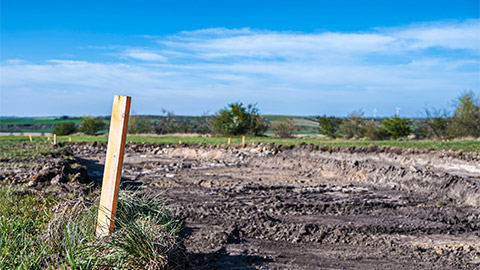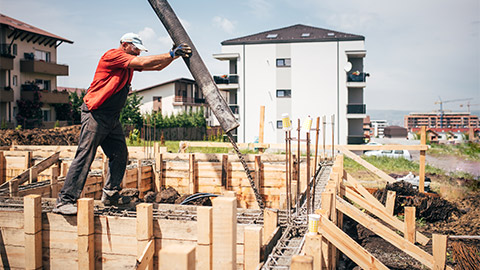In certain cases, to do building work on their own land, property owners and/or property developers will need access to adjacent lands.
In the usual course, negotiations with the adjacent landowner should take place in the first instance. Unless the required access is to be very temporary (for example, for a one-off occasion for a limited period) where the access is essential for the project, it is better for there to be a formal agreement between the parties setting out the terms of the agreement and the responsibilities of each party. Having a formal agreement in place will minimise the risk of withdrawal of consent, as well as help prevent conflicts either during the access process or until access is no longer necessary.
In any other access agreement, examples of problems that can be discussed include:
- limitations about how access can be exercised
- periods during which access should be granted
- the way in which access should be given
- measures to be taken to prevent undue harm to the adjoining house.
Examples
Popular examples of the need for access to building work include the following:
- the placement of rock anchors under the adjoining property In order to shore up the land as construction work takes place.
- scaffolding or hoarding over the borders of sites
- the crane swings over the adjoining property's airspace
- entry to utilities for irrigation and electricity.
There are ways in which the courts can grant access to a neighbouring property if an arrangement cannot be reached between the parties. The most notable is the Conveyancing Act.
Order of the Supreme Court granting an easement under the Conveyancing Act
Under Section 88K of the Conveyancing Act, a person can apply to the Supreme Court for an order imposing an easement over the adjoining land. For the Court to make such an order, the Court must be satisfied that:
- The easement is fairly required for the property to be used or built effectively. It is important to remember that 'reasonably necessary' does not mean 'absolutely necessary'. Compared to the application or production without the easement being given, the easement must be the chosen approach.
- The use of the land shall not be inconsistent with the public interest, i.e., the granting of the land shall not prohibit or adversely affect any public activity.
- Any loss or disadvantage resulting from the granting of the easement can be sufficiently compensated by the owner of the adjacent land and any individual having a registered interest in the land (such as a tenant or mortgagee).
- All fair attempts were made, but were unsuccessful, to acquire the easement.
Because the power to grant the easement is discretionary, the Court needs to be assured that granting the easement is necessary. The Court is mindful of the fact that an easement interferes with the current property rights of the adjacent landowner when considering an application for an easement order to be issued.
Applications by arbitration would more likely be more expensive than a settled deal. Moreover, when applications for an access order or an easement are made, the general cost rule is that the costs of all parties to the application are usually incurred by the individual requesting the easement or access order.
Because it is a precondition for any of the above-mentioned demands that talks have been concluded and that they have been unsuccessful, it could take several months before the start of the proceedings. To endorse an application and to prove that fair talks have failed, experts such as valuers will also need to be involved as part of the procedure (for example the adjoining landowner demanding an amount of compensation more than what is reasonable compensation for the easement or access order).
Instead of leaving it to the last minute, it is, therefore, necessary to begin every such process as soon as possible.
It is important to analyse the state of existing buildings and structures on adjacent site boundaries before starting a project. You will decide in this analysis whether these buildings or structures are already damaged or not.
You should photograph these buildings and structures during the inspection so that you can have proof of the condition of these buildings and structures before construction starts on the project site.
A report containing these photos will then be collected so that you have recorded documentation of the status of current buildings and structures on the adjacent site boundaries.
Condition report
A condition report is a report on the conditions of the site prior to the beginning of construction. This includes an inspection of the site, during which a site manager becomes aware of any possible issues that might occur.
Here are some things you should consider:
-
State of site
Present state of the site, such as trees, vegetation, slope, north aspect

-
Services for removal
Any existing services which need to be removed

-
Legal issues
Legal issues may arise from borders, such as a dispute over borders

-
Characteristics of adjacent properties
If excavation is to take place, any characteristics of adjacent properties that require attention and/or protection from potential damage claims, such as a pool close to the boundary, can require protection.

In general, a site survey will be performed independently of each other on two occasions, and these are:
- Prior to tender - it is necessary for the investigation to be comprehensive at this time so that all tender-related matters are included in the conditional report.
- Prior to construction - a condition investigation report may or may not help the supervisor, but it is in their interests to plan their own.
It is critical that this expertise is thoroughly recorded. For the duration of the construction period, a construction company pays a deposit to the local authority against damage to hiking trails, nature strips and roads, like kerb-n-channel. The deposit known as 'asset security' will vary from $500 to $5,000 and is not repaid until all damage incurred by the company's project has been restored until the local authority is satisfied.
At the end of the module, at the Additional Resources, you can access a sample Dilapidation Report, also known as Condition Report.

If you have compiled the condition report, before commencing construction, you will then forward it to the owners of the adjacent buildings.
You will receive consent from them that this is the true state of these structures or buildings. You will need to receive from the owner a signed copy of this agreement. This means that in the future, there is no confusion and no false allegations for damage to these buildings or infrastructure can be made. In the future, this will prevent several issues. You will then continue with work on the site once you have this agreement.
If there is a claim or damage to a building or structure that is not a valid claim, you should refer to the documents signed by them to show that it is not caused by construction on the project site.
The supervisor should carefully check and record the relevant site information in writing, in sketches and in photographs to be compiled into a condition report. This report is supplied to the site office and neighbouring property owners.

